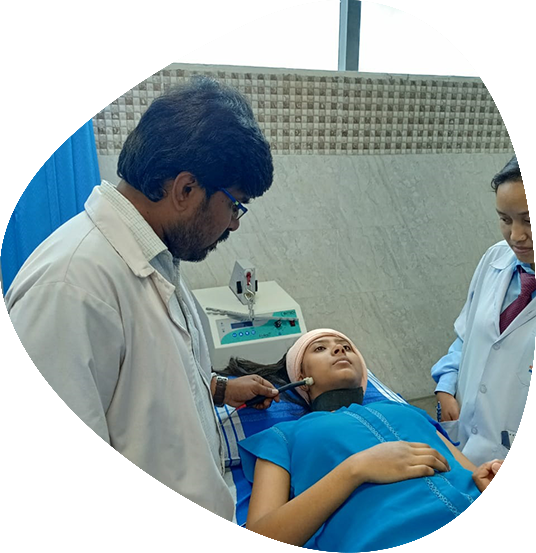24/7
-
Call Us
-
E-mail Us
- Book Now
Neuro Rehabilitation: Stroke, Facial Palsy

Neuro Rehabilitation: Stroke, Facial Palsy
In both stroke rehabilitation and facial palsy rehabilitation, physiotherapy is a vital component of a comprehensive treatment plan. It helps individuals regain functional abilities, enhance their quality of life, and promote overall recovery by targeting specific motor and sensory impairments caused by neurological conditions. Stroke Rehabilitation include Motor Function Improvement, Gait Training, improve range of Motion as Stroke can cause muscle stiffness and reduced joint mobility. Physiotherapy employs stretching and range-of-motion exercises to prevent contractures and improve joint flexibility.
Balance and Coordination: Physiotherapists use exercises and balance training to address issues related to impaired balance and coordination, reducing the risk of falls and enhancing overall stability.
Functional Independence: Stroke survivors often struggle with performing daily activities. Physiotherapy focuses on training patients to regain functional independence in tasks such as dressing, bathing, and cooking.
Motor Relearning: Physiotherapists use techniques like constraint-induced movement therapy (CIMT) to encourage the use of the affected limb and promote motor relearning.
Task-Specific Training: Physiotherapy involves designing exercises that mimic real-life activities, helping patients regain skills needed for daily living. Neuroplasticity: Physiotherapy stimulates neuroplasticity by challenging the brain to reorganize andadapt. This is essential for rewiring neural pathways and promoting recovery.
Facial Palsy Rehabilitation Includes:
- Facial Muscle Strengthening
- Facial Expression Restoration
- Massage and Manual Techniques
- Coordination and Control
- Prevention of Muscle Atrophy
- Biofeedback
- Emotional Support
- Mirror Therapy
